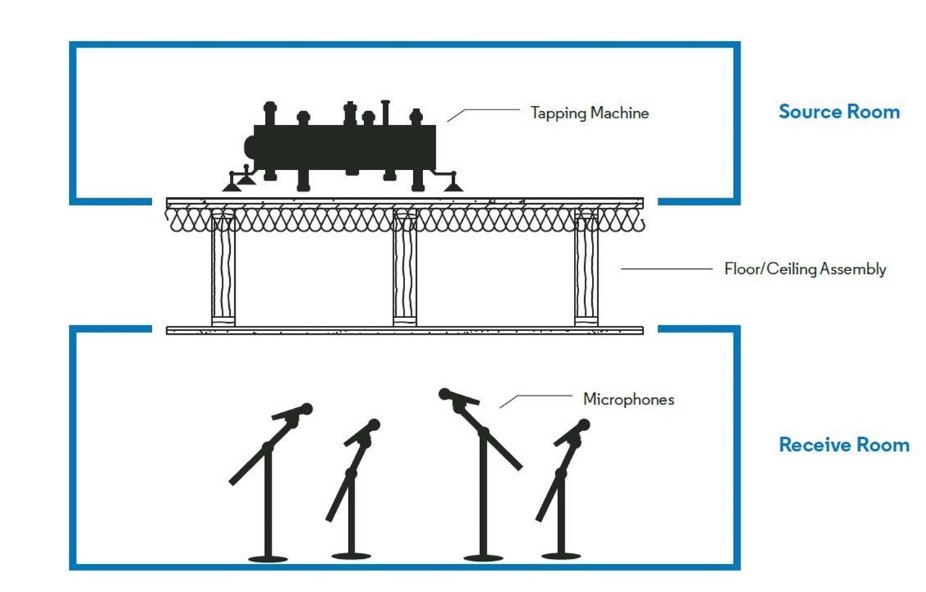
Can't see the region you're looking for? You can find a list of our global locations here
Acoustic testing standards, regulations and guidelines have been put in place with the intention of making our world a quieter place.
The two basic test standards for sound ratings in most buildings are STC (Sound Transmission Classification) and IIC (Impact Insulation Class), but to get a better understanding of both, it important to understand two basic sound concepts because the distinctions between the two determine which guidelines and standards apply.
Sounds that start in the buildings structure such as footsteps, door slamming, dropped objects, etc.
Sounds that start in the air such as barking dogs, TVs, stereos, yelling/talking, etc.
IIC or Impact Insulation Class is a rating for how well a floor assembly blocks impact vibrations and it measures the level of structure-borne sound isolation between two spaces. These tests are done by professionals using two rooms above one another. In the top room is a tapping machine with steel-faced hammers that strike the floor to generate an impact noise to the room below with microphones. The microphones can then determine an IIC rating, see how the test setup is done below.


STC or Sound Transmission class is the rating of sound isolation of a building floor/ceiling assembly, it measures the level of airborne sound isolation between two spaces and ultimately tells us how much sound is blocked from leaving/entering a room. To test for an STC rating, the setup is similar to an IIC test with two rooms above each other, but for this both rooms have microphones. In the room above, a really loud sound is played, and the sound levels are measured in both rooms, but the difference in sound levels between the top and bottom rooms determine the STC rating.
When conducting IIC and STC testing, the entire assembly is tested rather than individual materials. An assembly refers to the entire construction of the floor and ceiling, including everything in between, and ultimately describes how it was built. The two assemblies most used today are drop ceilings and concrete slabs.
Drop ceilings are common in offices, hospitals, commercial buildings, etc. The assembly for testing drop ceilings with Altro Acoustic Underlay 1101a started with a layer of concrete with some Altro Underlay laid on top of it. Underneath the concrete was hanger wire holding up a ceiling grid with insulation above, and then finally ceiling tile was attached to the ceiling grid to make the drop ceiling assembly complete for the floor below.
Concrete slabs are common in most building types, besides residential, as they can be used as part of a floor or a ceiling. Testing Altro’s Underlay on a 6” concrete slab was the same as the drop ceiling, but with no drop ceiling components to the equation. Just the Underlay being laid on top of the concrete slab and then getting the testing done directly below the flooring.
The International Building Codes standard accepted minimum for commercial buildings is a rating of 50 or more IIC and STC when using concrete.
Altro offers Altro Acoustic Underlay 1101a, an underlayment which achieved a score of 54 in both IIC and STC rating, making it fall into the category of professional, commercial soundproofing that could be used in recording studios for its underlayment’s. For residential areas such as condos/apartments, or any area using drop ceilings, a standard IIC and STC rating of above 55 is required. This product has also surpassed this standard with a 62 IIC and 65 STC rating.
With this underlayment, any Altro sheet flooring product can be installed on top and meet the Interntional Building Code standards for sound insulation.
When selecting flooring and underlayment for a particular assembly, it is imperative to consider all the details of the assembly and to get acoustical test data for an assembly as close as possible to the actual installation you will be using.
Make sure to ask for the test reports for any products that publish IIC and STC results so you can ensure the product’s performance meets your project’s requirements.